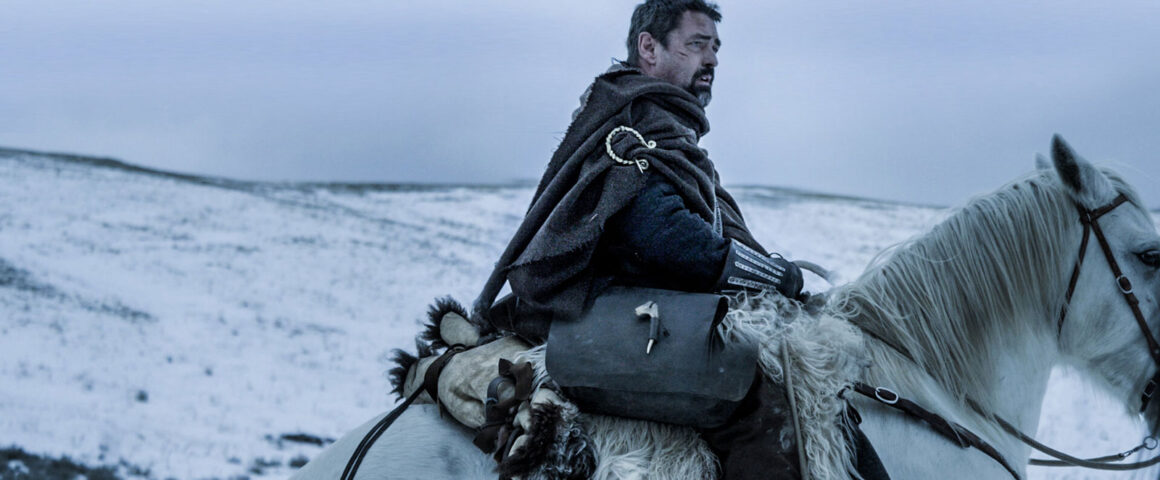A nominal sequel to Mel Gibson’s 1995 epic “Braveheart” sounds thrilling all around — bringing viewers back to Scotland’s bloody medieval war cry against the brute, Edward Longshanks of England. Enter Robert the Bruce. In it, Angus Macfadyen (“The Lost City of Z”) also reprises his role as Scottish freedom fighter, Robert the Bruce. Yes, it has the makings of a resonant film that could connect another generation to Gibson’s iconic work. Yet, the Richard Gray (“Sugar Mountain”) directed project is a slog that neither grips audiences nor quite knows its own objective.
Although Macfadyen — also a screenwriter and producer on the project — is a welcome contrast to two hours of boredom, he is underused and undervalued in a low-budget production that feels more like a hero’s journey of the Wild West than a sword-slinging epic set in the Scottish Highlands. Robert the Bruce does a disservice to its predecessor based on its sheer faultiness on everything from script to setting to characterization. What viewers may remember about this film, if anything, is that the filmmakers should have left well enough alone. The sequel — made a quarter century after “Braveheart” but picking up right in its wake — feels choppy and quite unnecessary.
Even at its core, Robert the Bruce fails to conjure lasting historical appreciation for the man who helped orchestrate Scottish resistance to English tyranny and led the nation from 1306-1329. Robert, a famous warrior of his age, led his nation through the First War of Scottish Independence and is, today, deemed a national hero. His appearance in the eponymous film feels like an irrelevant backstory to decades of service.
Specifically, the film picks up where “Braveheart” left off — with Robert now carrying William Wallace’s banner and leading the Scots into battles to rid themselves of English rule. But it features far less glory. The ’95 film, masterfully penned by Randall Wallace, was able to capture global attention as an unflinching war epic with sweeping vistas, accurate period attire and an intriguing narrative — capped off by a compelling turn from Gibson. Here, Robert’s army reaches the ultimate battle fatigue and his ranks begin to fracture; as such, and with a bounty on his head, he resigns to his new fate and flees.
His soldiers, some of whom ultimately show a preference for Edward II’s rule or simply shift their allegiance with some coin, agree to hunt Robert for a sizable bounty. Soon, the Scottish sovereign is left for dead in the snowy mountains (actually Montana’s beautiful Yellowstone River Valley), until discovered by a peasant family, which at first fails to recognize the beleaguered king. They heal and feed the Scottish ruler, only to slowly reignite his passion for the fight. He’s left to ward off the family’s vengeful uncle figure, Brandubh (Zach McGowan, “Dracula Untold”), and reclaim his throne and Scotland’s sovereignty.
Throughout, Gray and Macfadyen limit the film’s scope, scrapping memorable cinematic battles in lieu of drawn-out and somewhat lackluster beats with familial disputes and Robert’s entry into the lives of this family. Performances from the family members, including matriarch Morag (Anna Hutchison, “The Cabin in the Woods”), her young son Scot (Gabriel Bateman, “Lights Out”), niece Iver (Talitha Bateman, “Annabelle: Creation”) and nephew Carney (Brandon Lessard, “Broken Ghost”) are certainly strong, but are eclipsed by needless scenes at their forested hovel as they begin to shelter the king.
Despite its slow pacing and tepid salute to its predecessor, Robert the Bruce still features remarkable frames — chalked up as the Scotland’s hillsides — as well as a likable turn from Macfadyen in the same role that once found him transform from turncoat to hero. Conceptually, Robert the Bruce has a riveting premise; its execution, however, is poor. The filmmakers’ salient choices — including genre, apparently — craft more of a snowy western than a medieval brawl, and its rather innocuous approach seems far too different from “Braveheart” to be its “sequel.”
Sure, a subtle nod to Gibson’s cinematic world is likely a strong approach for Gray, but the lax storytelling and poor pacing makes this new work a mostly forgettable effort destined for video-on-demand anonymity.



